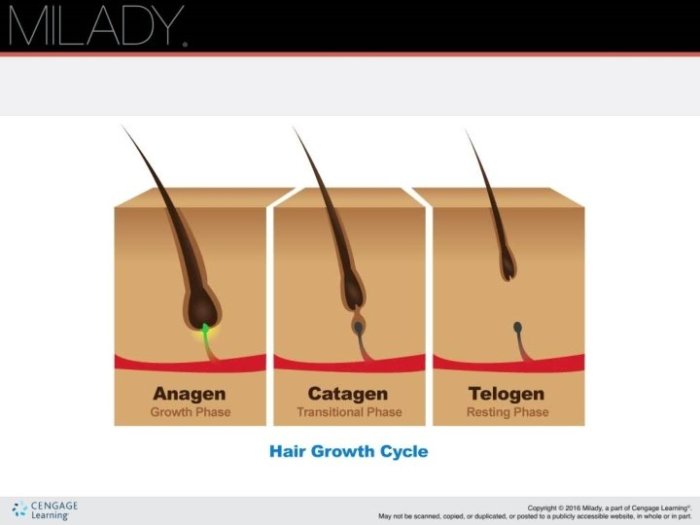Properties of the hair and scalp chapter 11 – Welcome to the intriguing world of properties of the hair and scalp, where we embark on a captivating journey to unravel the complexities of these essential components of our physical appearance. This comprehensive guide promises to provide a wealth of knowledge and practical insights, leaving you with a profound understanding of the intricate relationship between hair, scalp, and overall well-being.
Delve into the fascinating realm of hair structure, exploring the anatomy of each strand, from the protective cuticle to the nourishing medulla. Discover the diverse array of hair proteins and their crucial roles in maintaining hair health. Furthermore, uncover the secrets of scalp anatomy, delving into the layers of the epidermis, dermis, and hypodermis, and unraveling the functions of various scalp cells.
1. Introduction

Hair and scalp are essential components of human anatomy, playing significant roles in personal appearance, self-esteem, and overall health. Understanding their properties is crucial for maintaining healthy hair and scalp.
Hair, a fibrous protein known as keratin, emerges from the scalp, which is a specialized region of the skin covering the skull. Various types of hair and scalp conditions exist, each with unique characteristics and implications.
2. Hair Structure: Properties Of The Hair And Scalp Chapter 11

Hair comprises three primary layers: the cuticle, cortex, and medulla.
The cuticle, the outermost layer, consists of overlapping scales that protect the inner hair shaft from damage. The cortex, the middle layer, provides strength and elasticity to the hair. The medulla, the innermost layer, is responsible for hair insulation and color.
Hair proteins, including keratin, trichohyalin, and filaggrin, determine hair’s strength, texture, and color.
3. Scalp Structure

The scalp consists of three layers: the epidermis, dermis, and hypodermis.
The epidermis, the outermost layer, contains cells that produce keratin and melanin, the pigment responsible for hair color. The dermis, the middle layer, contains blood vessels, nerves, and hair follicles. The hypodermis, the innermost layer, provides insulation and support to the scalp.
Scalp cells, including keratinocytes, melanocytes, and sebaceous glands, contribute to hair growth, pigmentation, and scalp health.
FAQ Section
What are the key factors that influence hair growth?
Genetics, hormones, nutrition, and overall health all play significant roles in determining hair growth patterns.
How can I prevent dandruff?
Regular use of anti-dandruff shampoos, maintaining a balanced diet, and managing stress levels can help prevent dandruff.
What are the potential causes of hair loss?
Hair loss can be caused by hormonal changes, genetics, certain medical conditions, and lifestyle factors.
